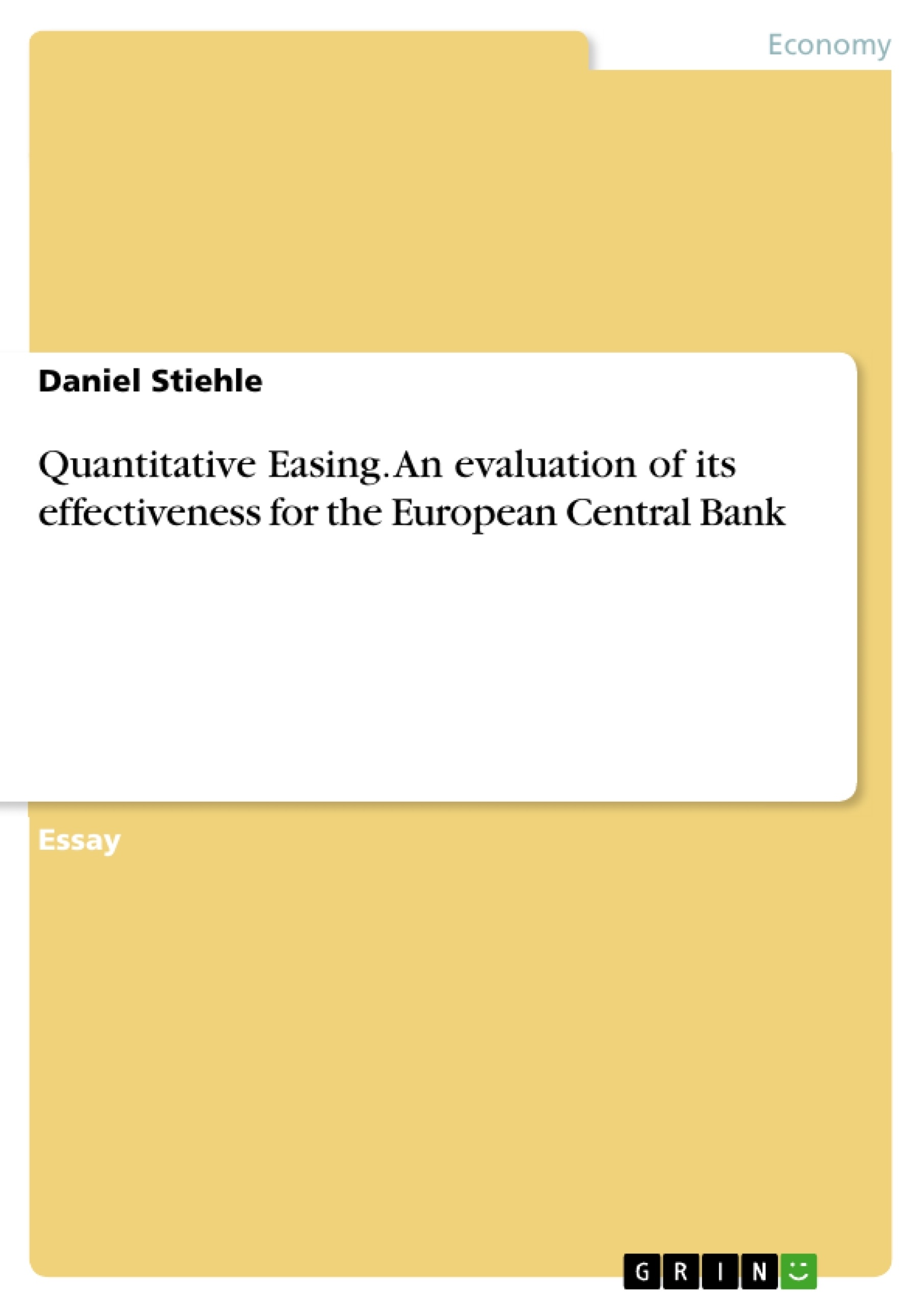This Essay addresses Quantitative Easing and gives an evaluation of its effectiveness and whether or not it was necessary for the European Central Bank to launch its QE program announced in January 2015.
In response to the Financial Crisis of 2008, Central Bankers sought to respond with aggressive monetary policy in order to prevent deflation and stimulate aggregate demand. However, since nominal interest rates were already historically low, following the era of ‘Great Moderation’, there was an increased likelihood of nominal interest rate policy being constrained by the Zero Lower Bound. Indeed, by early 2009, 4 major global Central Banks, namely the Federal Reserve (Fed), the Bank of England (BoE), the Bank of Japan (BoJ) and the European Central Bank (ECB) had lowered policy rates to their respective lower bounds. Taylor rule predictions advocated lower policy rates than those achieved by Central Banks at the effective Zero Lower Bound, motivating unconventional policy approaches, depending on individual Central Bank objectives. The ECB implemented QE policy more hesitantly, increasing the size of bank balance sheets by 50% immediately following the collapse of Lehman Brothers, in contrast to the US and UK, whose bank sheets tripled in size.
Due to the bank-centric nature of Eurozone economies, firms tend to fund investment through bank borrowing as opposed to money-markets. Hence the ECB adopted an approach of increasing the elasticity of supply of loans by accepting a wide range of assets as collateral and offering unlimited funds at a fixed rate. This served to increase the size of banks’ balance sheets, although bond purchases were subsequently carried out under the framework of the Covered Bond and Securities Markets Programme. The stated aim of QE was to suppress deflationary threats and encourage investment and consumption, although many question the purchase of bonds of heavily indebted states amidst the Sovereign Debt Crisis of 2010, which some suggest allows for the delay in structural, economic reform.
Inhaltsverzeichnis (Table of Contents)
- Quantitative Easing and its transmission mechanism
- Policy Signalling
- Portfolio rebalancing
- Rationale and effectiveness of QE
Zielsetzung und Themenschwerpunkte (Objectives and Key Themes)
This paper evaluates the effectiveness of Quantitative Easing (QE) in the European Union and determines whether the European Central Bank (ECB) needed to implement its QE program announced in January 2015. The paper defines QE and its transmission mechanism, exploring the rationale behind the ECB’s decision to implement QE and examining its effectiveness.
- The definition and mechanisms of Quantitative Easing
- The rationale behind the ECB's implementation of Quantitative Easing
- The effectiveness of QE in influencing economic activity in the Eurozone
- The debate surrounding the necessity of QE in the face of other policy options
- The impact of QE on the Eurozone's exchange rate and its implications for competitiveness
Zusammenfassung der Kapitel (Chapter Summaries)
The first chapter delves into the intricate transmission mechanism of Quantitative Easing (QE), outlining its key channels. It examines how QE influences economic activity through policy signaling, portfolio rebalancing, and asset price effects.
The second chapter analyzes the rationale and effectiveness of QE. It explores the reasons behind the ECB's implementation of QE, particularly in the context of the Zero Lower Bound and the need to stimulate economic activity. The chapter investigates the impact of QE on various macroeconomic indicators such as credit growth, inflation, and unemployment.
The third chapter examines the specific case of the ECB's QE program and its influence on the exchange rate. The chapter analyzes the link between QE and the depreciation of the euro, assessing its potential to enhance competitiveness and stimulate economic growth.
Schlüsselwörter (Keywords)
Quantitative Easing, European Central Bank, transmission mechanism, policy signaling, portfolio rebalancing, asset price effects, Zero Lower Bound, credit growth, inflation, unemployment, exchange rate, euro depreciation, competitiveness, economic growth
- Quote paper
- Daniel Stiehle (Author), 2016, Quantitative Easing. An evaluation of its effectiveness for the European Central Bank, Munich, GRIN Verlag, https://www.grin.com/document/334442



